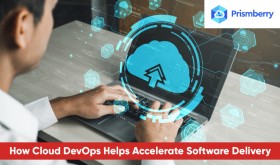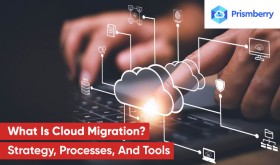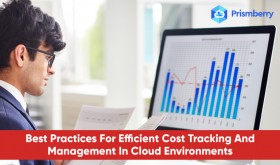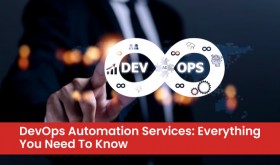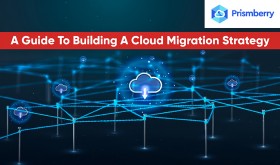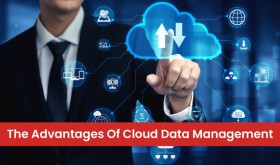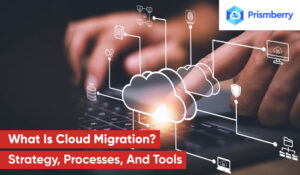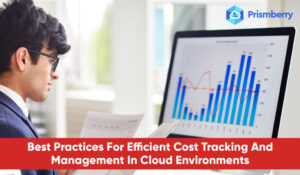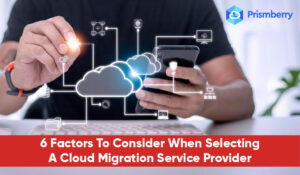
Cloud computing has completely evolved the concept of Remote computing. Cloud computing has completely transformed how organizations design and deploy their IT infrastructure, applications, and data.
“This is my favorite part about analytics: Taking boring flat data and bringing it to life through Visualizations.” – John Tukey, Mathematician
Cloud computing has completely evolved the concept of Remote computing. Cloud computing has completely transformed how organizations design and deploy their IT infrastructure, applications, and data. These are due to the impact of the top cloud platform providers – Amazon Web Services (AWS), Google Cloud Platform (GCP) and Microsoft Azure, in bringing out pay-as-required pricing, thus providing instant flexibility, scalability, and to select from a huge portfolio of services.
Organizations never again depend on a static Content Delivery Network, however routinely work with numerous CDNs serving various districts. Web engineers are moving more burden to the customer (your end client’s program), which can make the client experience more surprising. With the ever-evolving dynamic infrastructure and Cloud-based applications, monitoring platforms are needed to change as well. These platforms help in acquiring and analyzing real-time metrics through visualizations on dashboards. For example, DataVision showcase real-time metrics through customizable Dashboards at different levels- Cluster level, Node level, Pods level, and Application Level, thus giving a drill-down overview of the cloud metrics.
What are the top 10 metrics in Cloud Computing that are required to be tracked?
- CPU usage- Core usage, Clock speed
- Memory Usage- Capacity available, Memory used,
- CPU temperature- Core temperature, Correlation of CPU temperature with usage
- Data Storage usage- Disk read usage, Disk write usage,
- Network Bandwidth usage- network speed, inbound traffic, outbound traffic, Ping
- Data Storage Latency- Read Latency, Write Latency
- No. of Clusters/ Applications/ process running- System load,
- Share of resources by processes- CPU share, memory share, Disk share
- Network errors over time
- Process Wait time
Through DataVision, you can track and monitor all these top 10 metrics along with many more metrics. Calculated metrics between the above-said metrics can also be monitored or visualized through a dashboard and all these metrics can be supervised at multiple levels of System processes. Web-analytics can also be integrated with DataVision.
Here are the Top 7 reasons why metrics matter in Cloud computing:
Cloud optimization
It refers to discovering, correcting and enhancing inefficiencies for cloud-based applications. These inefficiencies may refer to- unutilized computing capacities, overutilization, and underutilization of memory and storage capacities, unnecessary data-transfers. The inability to improve resource utilization will have more prominent ramifications for the global endeavor than the little activity regarding costs, performance, and security. This inability uprooted the need for cloud optimization.
When you have a clear picture of your cloud environment, it at that point gets simpler to distinguish where wasteful aspects exist, where expenses could be decreased, and where performance could be improved without giving up the security of your Cloud Infrastructure. Rightsizing underutilized occurrences is a decent spot to begin redressing wasteful aspects, however, you may likewise need to consider issues.
Anomaly detection
Anomalies in cloud environments refer to sudden and unexpected variations in the metrics- like spikes or trenches (drops) in website traffic, memory usage, CPU usage, Burst in Network I/O, etc. These anomalies significantly hint towards data theft, data loss, or hacking activity. Cloud monitoring gives a simpler method to distinguish examples and pinpoint potential security vulnerabilities in the cloud framework. As there’s a general impression of lost control when significant information is put away in the cloud, powerful cloud observing can comfort organizations more with utilizing the cloud for moving and putting away information.
At the point when client information is put away in the cloud, cloud checking can forestall loss of business and dissatisfactions for clients by guaranteeing that their own information is safe. The utilization of web administrations can expand security dangers, yet distributed computing offers numerous advantages for organizations, from availability to superior client experience. Cloud observing is one activity that empowers organizations to discover the harmony between the capacity to alleviate dangers and exploiting the advantages of the cloud – and it ought to do as such without ruining business forms.
App optimization
Application performance issues don’t just leave when associations break up their merged server and send it into a distributed computing environment. Similar exhibition issues that are in the server will follow applications to the cloud. For example, inadequately performing SQL questions will keep on performing ineffectively, whether or not they are running in the cloud or running on a nearby server. What’s more, simultaneously, moving to the cloud shows an assortment of new execution concerns. New issues emerge, for example, virtual machines that turn up and turn down. It’s an unpredictable situation, and any observing arrangement utilized in the cloud needs to adjust to that. An exchange that occurs in a virtualized situation will range over different physical servers, making the observation of individual bits of equipment pointless. Thus, if optimization at high-level doesn’t give results then optimization at the app level will surely do and it can only come to know if the app is being monitored with the right metrics continuously.
Alerting
Once we know which metrics to track consistently, we can plan thresholds for alerts for different levels of severities. Alerts are commonly the quickest and best approach to be informed when something turns out badly so you can take swift, decisive action. Yet, alarms likewise have the shame of being excessively uproarious, tossing out bogus positives, or requiring a ton of calibrating to get right. All things considered, a minor bug in the code that doesn’t influence end clients isn’t the sort of thing you ought to be woken up in the center of the night.
Cloud Governance
To kill issues with expenses and proficiency, you have to make a lot of rules. These standards of cloud governance should comprise of spending plans for how a lot of divisions can spend, rules about what programming, applications, and projects offices can utilize, and strategies for cloud security. Normally, the standards can be adaptable can be created by analyzing key metrics in the cloud environment, however, there should be an endorsement procedure set up to forestall an excessive amount of adaptability.
At that point, consistency with the principles should be observed. This can be accomplished by means of a wide range of kinds of cloud the board programming; despite the fact that, on the off chance that you work in a multi-cloud or crossbreed cloud condition (or plan to), it is smarter to utilize an outsider cloud the board arrangement—as opposed to programming provided by cloud specialist co-ops—so as to give you all out visibility of all your business’ cloud action.
Insights and predictive analytics
The data collected over a period of time can be utilized to identify patterns and insights that will help in accurate planning of resource allocation every single time. Irregularities and inefficiencies can be predicted rightfully based on historical evidence and predictive analytics. Over a period of time, data can be modeled, trained, and can be used for developing Machine learning and Deep learning algorithms, Decision trees, projections, etc.
Consistent monitoring gives more reliability for customers
Consistent metrics tracking and monitoring prevent and eliminate the chances of errors, bugs, disasters, data loss, and helps in enhancing the server uptime. Customers of any business would like to see if their data is secure, safe and uncompromised without knowledge. A more relied solution significantly reduces the anxiety of customers and will surely find this value addition rewarding if such aesthetics are constantly maintained.
Conclusion
Effectively, consistent metrics tracking and monitoring make a lot easier for the DevOps team of any organization. It helps in creating a more cost-effective and efficient cloud environment and alarms you to potential security issues before they form into genuine concerns. It is absolutely worth exploring paying little mind to what size of activity you run in the cloud now you comprehend what is cloud monitoring.The scope of utilization of the monitored metrics is surprisingly good and it will help in achieving automation for issue-resolving, predictions, disaster prevention, and decision assistance using AI, machine learning and deep learning applications on the recorded metric sets.



